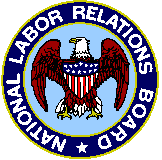Information contained in this publication is intended for informational purposes only and does not constitute legal advice or opinion, nor is it a substitute for the professional judgment of an attorney.
 While Hurricane Irene churned up the East Coast this weekend, quieter, albeit significant changes were taking place at the National Labor Relations Board. Long-time Board member and Chairman Wilma Liebman’s term expired on Saturday, August 27. Fellow Democratic member Mark Gaston Pearce has been designated as the new Board Chairman. The remaining members include Brian Hayes, a Republican, and Craig Becker, a Democrat, whose recess appointment expires at the end of this year and will not likely be confirmed for a full term. The vacancy left when Republican member Peter Schaumber left the Board after his second term expired in August 2010 has yet to be filled. In January 2011, President Obama nominated Terence F. Flynn – who currently works as Hayes’ Chief Counsel – to fill that vacancy. Senate action on Flynn’s nomination, however, is still pending. The probable result of these changes will be that the Board will be left with only two acting members come January 2012.
While Hurricane Irene churned up the East Coast this weekend, quieter, albeit significant changes were taking place at the National Labor Relations Board. Long-time Board member and Chairman Wilma Liebman’s term expired on Saturday, August 27. Fellow Democratic member Mark Gaston Pearce has been designated as the new Board Chairman. The remaining members include Brian Hayes, a Republican, and Craig Becker, a Democrat, whose recess appointment expires at the end of this year and will not likely be confirmed for a full term. The vacancy left when Republican member Peter Schaumber left the Board after his second term expired in August 2010 has yet to be filled. In January 2011, President Obama nominated Terence F. Flynn – who currently works as Hayes’ Chief Counsel – to fill that vacancy. Senate action on Flynn’s nomination, however, is still pending. The probable result of these changes will be that the Board will be left with only two acting members come January 2012.
With only two members, the agency could be restricted in its ability to issue decisions and finalize regulations. In last year’s New Process Steel opinion, the Supreme Court held that the National Labor Relations Act requires that the Board operate with at least three members in order to exercise its full authority. While regional NLRB offices would still be able to conduct representation elections and investigate unfair labor practice charges, any appeals to those decisions or outcomes would be unable to progress to the highest administrative level. Although the President could seat another member via recess appointment, actions in the House may limit the ability of the Senate to officially recess any time soon, thereby preventing the President from making any recess appointments.
The potential ramifications of the open Board seats have some in the business and labor communities abuzz. Some believe that before January 1, the remaining members will issue a flurry of decisions and finalize a number of new rules, which is particularly troubling to employers in light of the NLRB’s controversial actions with respect to both case processing and rulemaking. Concerned with that possibility, one organization in an open letter to member Hayes has called for his resignation, which would leave the Board with two acting members, thereby cutting off the agency’s ability to issue any further decisions or rules.
The impact of a two member NLRB post-New Process Steel is not entirely clear, but given the current political climate, it would appear that a two-member panel is a distinct possibility. While such a situation certainly will affect employers and their operations, only time will tell exactly how.


